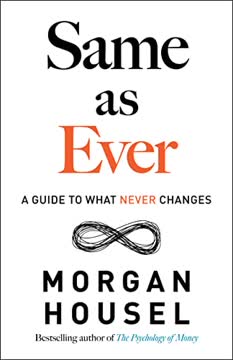Key Takeaways
1. The Grid: A holistic decision-making tool for business success
There are three things that make for a successful business. The first is desirability. If people don't want or need what you offer, you have a fundamental problem.
The Grid framework helps businesses make better decisions by considering nine interconnected elements: wants and needs, rivalry, offerings, revenues, bargaining power, costs, customer base, imitability, and adaptability. This holistic approach ensures that decisions are made with a full understanding of their potential impacts across the entire business.
Key benefits of the Grid:
- Allows thinking in wholes, not just parts
- Sees the world in motion, not static snapshots
- Universally applicable to businesses of all sizes and types
- Facilitates teamwork and structured conversations
- Complements existing business methodologies
By using the Grid, decision-makers can avoid unintended consequences, manage conflicting goals, and make choices that improve overall business success.
2. Understanding customer wants and needs is fundamental
If customers expect your product to become popular, a bandwagon will form, the virtuous cycle will begin, and consumers' expectations will prove correct. But if consumers expect your product to flop, your product will lack momentum, the vicious cycle will take over, and again consumers' expectations will prove correct.
Customer understanding is the foundation of any successful business. To truly grasp your customers' wants and needs, focus on three key areas:
- Values and beliefs: Identify how customers see themselves and what principles they hold dear.
- Goals: Uncover the super objectives driving customer behavior and any hidden subtexts.
- Barriers: Recognize obstacles preventing customers from achieving their goals or adopting your product.
By aligning your offering with customers' self-image, values, and goals while addressing barriers, you create a magnetic appeal. Remember that customer beliefs can be changed, but it requires a two-pronged approach: appealing to existing desires and providing reassuring evidence of your solution's efficacy.
3. Analyze your competitive landscape to position effectively
If you had just one bullet in a figurative pistol, whom among your many competitors would you save it for?
Strategic positioning requires a deep understanding of your competitive landscape. Start by clearly defining your category and territory, then identify your direct alternatives and potential substitutes.
To effectively position your business:
- Plot competitors on a market map to visualize price and quality positioning
- Identify vacant positions that present opportunities
- Consider how your position affects marketing and pricing strategies
- Regularly reassess your position as the competitive landscape evolves
Remember that your own product range can sometimes be your biggest rival. Avoid overwhelming customers with too many choices, as this can lead to decision paralysis and lost sales.
4. Create a compelling offering through proposition, brand, and experience
If you can't complete Moore's statement for your proposition, your team can't agree on a common version, or your customers don't buy into it, devote all your energy to resolving this issue before moving forward.
A successful offering combines three interdependent elements:
- Proposition: Clearly articulate what your product or service is and why it's a good choice.
- Brand appeal: Develop consistent associations that apply to all your products and services.
- Customer experience: Ensure positive interactions at every touchpoint.
To create a compelling proposition:
- Make it relevant to the customer
- Ensure it's distinctive from competitors
- Outperform rivals where it matters most
- Focus on a small number of key benefits
For brand appeal, choose a distinctive set of associations and express them consistently across all touchpoints. In designing the customer experience, focus on creating positive peaks and eliminating negative troughs, as these have the most significant impact on overall satisfaction.
5. Optimize revenue through strategic pricing and volume management
Setting the right price for a product or service is the single most effective way to maximise profitability, and relatively minor changes often have a dramatic impact.
Revenue optimization requires careful consideration of your pricing strategy and volume management. When setting prices:
- Start with the price customers will pay, then work backward to determine costs
- Consider your market positioning and next-best alternatives
- Understand price sensitivity and symbolic value
- Experiment to find the optimal price point
To increase sales volume:
- Expand into new territories
- Offer different versions of your product at various price points
- Improve your proposition or customer experience
- Increase awareness through targeted marketing efforts
Avoid the temptation to discount heavily, as this can train customers to wait for sales and erode long-term profitability. Instead, focus on communicating the value of your offering to justify your pricing.
6. Manage bargaining power to maintain profitability
Whoever has the most bargaining power – your suppliers, your customers or you – gets to profit the most from the arrangement.
Bargaining power dynamics significantly impact profitability. To maintain a strong position:
- Diversify your customer and supplier base to reduce dependence
- Minimize switching costs for yourself while increasing them for customers
- Offer products or services that are crucial to your customers
- Differentiate your offering to reduce direct competition
- Develop unique capabilities that are difficult for others to replicate
Be cautious when exercising power over suppliers or customers, as excessive exploitation can lead to resentment and long-term negative consequences. Strive for mutually beneficial relationships that balance cooperation and competition.
7. Control costs and invest wisely for long-term success
If you run out of cash you cannot continue to operate the business, and the more cash you have, the more options you can pursue.
Cost management and strategic investment are crucial for long-term success. Key considerations include:
Fixed costs:
- Control headcount carefully, as it's often the largest fixed cost
- Regularly reassess the necessity of ongoing expenses
Variable costs:
- Implement target costing during product development
- Continuously seek ways to eliminate waste in processes
When making capital expenditures:
- Identify key constraints in your business before investing
- Estimate total costs and benefits over the investment's lifetime
- Calculate return on investment using methods like payback period or net present value
Maintain a healthy cash position to provide flexibility and resilience in the face of changing market conditions. Remember that profit on paper doesn't always translate to cash in the bank, so monitor your free cash flow closely.
8. Build and maintain a strong customer base
The cost of selling to an existing customer is typically much lower than acquiring a new one.
A robust customer base is essential for longevity. Focus on three key areas:
- Awareness: Ensure potential customers know your product exists through consistent, distinctive marketing efforts.
- Acquisition: Actively pursue new customers, as this often presents a larger growth opportunity than retention alone.
- Retention: Implement strategies to keep existing customers, such as loyalty programs or personalized experiences.
To measure success, track metrics like:
- Customer numbers and retention rates
- Customer profitability and lifetime value
- Acquisition and retention costs
- Net Promoter Score or Word of Mouth Index
Remember that while retention is important, acquisition often drives growth more powerfully, especially for businesses seeking to expand their market share.
9. Protect your business from imitation
A competitive advantage is any benefit that allows a business to outperform its rivals.
To safeguard your business from imitation, employ a three-pronged approach:
- Legal protection:
- Patents for inventions
- Trademarks for brand elements
- Copyrights for creative works
- Trade secrets for confidential information
- Durable advantages:
- Create unique combinations of activities that are difficult to replicate
- Develop lower costs or economies of scale
- Build strong customer retention through switching costs or ecosystems
- Leverage network effects where applicable
- Competitor lag:
- Continually innovate to stay ahead of imitators
- Force rivals to make difficult trade-offs
- Change the basis of competition in your industry
Regularly reassess your competitive advantages, as what works today may not be effective tomorrow. Be prepared to adapt your strategies as market conditions evolve.
10. Cultivate adaptability to ensure longevity
If our organisation is to transcend the adaptive cycle it must pursue new opportunities before it is too late.
Adaptability is crucial for long-term success in a constantly changing business environment. To maintain your ability to adapt:
- Maintain a healthy cash position to provide flexibility
- Ensure scalability in your operations and avoid over-optimization
- Resist the temptation to become overly complex or rigid as you grow
- Cultivate a mindset open to change and new opportunities
Key strategies for maintaining adaptability:
- Question your trajectory and avoid exaggerating your strengths
- Evaluate new threats seriously, even if they seem inferior at first
- Spend time on the front lines with customers to stay grounded
- Work on the next big thing before your current offering reaches its prime
- Allow new opportunities to have new configurations, free from existing constraints
By staying adaptable, you increase your chances of surviving and thriving in the face of unexpected changes and disruptions in your industry.
Last updated:
FAQ
What's The Grid by Matt Watkinson about?
- Holistic Business Framework: The Grid offers a comprehensive framework for understanding the interconnected elements that contribute to a business's success.
- Decision-Making Tool: It provides a structured tool to evaluate product ideas, refine strategies, and identify root causes of business challenges.
- Practical Guidance: The book combines theory with real-world examples to offer practical advice for navigating business complexities.
Why should I read The Grid by Matt Watkinson?
- Improved Decision-Making: It equips readers with a mental model to make informed decisions and reduce risks associated with strategic choices.
- Universal Applicability: The concepts apply to businesses of all sizes and types, making it a versatile resource.
- Real-World Examples: Numerous case studies illustrate the practical application of the grid, making the content relatable.
What are the key takeaways of The Grid by Matt Watkinson?
- Three Core Goals: Desirability, profitability, and longevity are identified as interdependent goals for business success.
- Nine Interconnected Elements: The grid outlines nine boxes representing factors affecting business success, such as customer wants, rivalry, and costs.
- Holistic Perspective: Viewing a business as an interconnected system is crucial, as changes in one area can impact others.
How is the grid model structured in The Grid by Matt Watkinson?
- Grid Structure: The grid is a table with three columns for core goals (desirability, profitability, longevity) and three rows for changing layers (customer, market, organization).
- Interconnected Factors: Each box contains elements affecting business performance, like customer wants and revenues.
- Decision-Making Framework: It serves as a framework to evaluate strategies and identify areas for improvement.
How can I apply the grid from The Grid by Matt Watkinson in my business?
- Evaluate Current Strategies: Map existing strategies onto the grid to identify strengths and weaknesses.
- Test New Ideas: Use the grid to assess new product ideas by analyzing alignment with customer wants and market conditions.
- Facilitate Team Discussions: The grid can be a common reference point for team discussions, promoting a shared understanding.
What are the elements of desirability in The Grid by Matt Watkinson?
- Wants and Needs: Understanding customer wants and needs is crucial for creating desirable offerings.
- Rivalry: The competitive landscape impacts desirability, with changes affecting how offerings are perceived.
- Offerings: The quality and appeal of offerings directly influence desirability, requiring continuous improvement.
How does The Grid by Matt Watkinson address profitability?
- Revenue Streams: Understanding different revenue streams and pricing strategies is emphasized for profitability.
- Cost Management: Effective cost management is essential, focusing on controlling expenses while maximizing revenue.
- Bargaining Power: The dynamics between suppliers and customers are crucial for negotiating better terms and improving margins.
What role does adaptability play in business according to The Grid by Matt Watkinson?
- Long-Term Survival: Adaptability is crucial for longevity, determining how well a business can respond to market changes.
- Organizational Flexibility: Building an adaptable organization involves fostering a culture of innovation and continuous improvement.
- Proactive Change Management: Recognizing the need for adaptability ensures preparedness for challenges and opportunities.
What specific methods does The Grid by Matt Watkinson propose for improving business performance?
- Cost Management Techniques: Techniques like eliminating waste are discussed, with a focus on addressing common sources early.
- Customer Base Development: Strategies for building and maintaining a healthy customer base are outlined, emphasizing awareness and retention.
- Adaptability Framework: A framework for assessing adaptability includes evaluating cash flow and scalability.
How does The Grid by Matt Watkinson define customer desirability?
- Customer-Centric Approach: Desirability is about how well a product meets customer needs and wants.
- Relative Value: Customers compare offerings to alternatives, highlighting the importance of positioning and differentiation.
- Emotional Connection: Emotional appeal plays a significant role, with products resonating on an emotional level more likely to succeed.
How does The Grid by Matt Watkinson suggest managing costs effectively?
- Data-Driven Decisions: Good data is crucial for managing costs, preventing overspending and inefficiencies.
- Prioritization of Cost Reduction: Focus on cost reduction opportunities based on impact and ease of implementation.
- Holistic View: Consider broader implications of cost-cutting measures to avoid compromising other business elements.
What are the best quotes from The Grid by Matt Watkinson and what do they mean?
- “Essentially, all models are wrong, but some are useful.”: This quote encourages using the grid as a practical tool despite its imperfections.
- “Success is not guaranteed by excellence in one or two areas, it emerges from all nine boxes on the grid.”: It underscores the importance of a balanced approach across all elements.
- “If you don’t want anyone to know, don’t do it.”: This serves as a reminder about transparency and ethical behavior in business.
Review Summary
The Grid receives mostly positive reviews, with readers praising its holistic approach to business decision-making. Many find it practical, insightful, and well-structured, appreciating its synthesis of various business aspects. The book's simplicity and clarity are highlighted, making it accessible to both experienced professionals and beginners. Some reviewers note that while it doesn't delve deeply into specific topics, it provides a valuable framework for understanding business complexities. A few criticisms mention that it could be more cohesive in tying concepts together.
Similar Books









Download PDF
Download EPUB
.epub digital book format is ideal for reading ebooks on phones, tablets, and e-readers.





